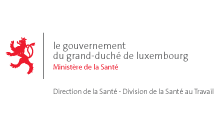
The founder and chief sustainability officer of GoodGuide Dara O’Rourke explained most of the app’s users worry about health, environmental and social impacts, but everyone prioritizes differently.
Some worry more about fair labor and trade practices, like whether a company compensates their workers fairly all along their supply chain, while others worry more about how biodegradable a product or its packaging might be. In 2010, O’Rourke said, GoodGuide’s users increasingly turned to the app to avoid specific known toxic or disagreeable ingredients.
The company’s employees have formed their own group with the new social features, and begun sharing and discussing corporate social responsibility issues, and products’ impact and effectiveness (image above).
An earlier version of the app already allowed users to scan bar codes on items they own, and store lists of items corresponding to a room in the house (image below). They rack up automatic “scores” reflecting how their bathroom, or laundry room supplies rank given their stated values. With Good Guide’s new social features, users can compare bathroom to bathroom, pantry to pantry, etc.

O’Rourke believes social features can give a huge word-of-mouth boost to brands that are most appreciated by customers and are most honest (or transparent) about what they make and how. He also believes it can inspire people to be competitive, in a good-natured way, about living a healthy and sustainable lifestyle.
Social recommendations make brands more memorable than editorial mentions or ads, generally, recent research suggests. This fall, Nielsen Online published research that found 68 per cent of people were more likely to remember an advertisement, brand or company name if they saw one of their friends recommending it or associating themselves with it online.
GoodGuide reports its unique visitor count and engagement numbers increased by about 20% each from November to December 2010, thanks to the addition of the social features. Comparing December 2009 to December 2010, Good Guide saw 12% growth in unique visitors.
 0 0
0 0
 9 9
9 9
Authors: Lora Kolodny
 GoodGuide — the mobile app and website that helps people find products that measure up to their environmental and social values — quietly rolled out new, social networking and product recommendation features this month.
GoodGuide — the mobile app and website that helps people find products that measure up to their environmental and social values — quietly rolled out new, social networking and product recommendation features this month.
















